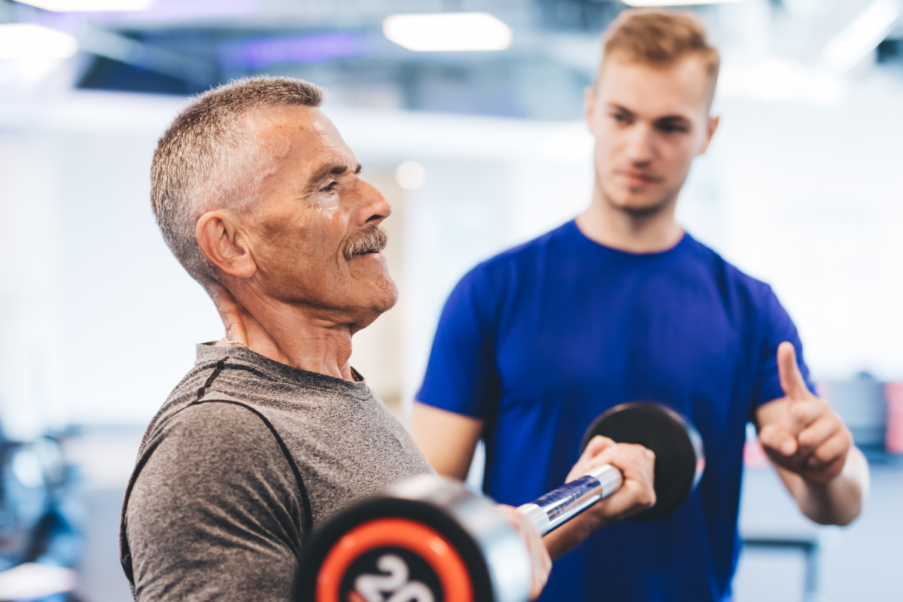Think Globally, Act Locally
This is the first in a series of articles that will offer health clubs simple and practical ways to make fitness happen at the community level.
It’s a Catch-22: As fitness professionals, we want to help the inactive
people in our communities live healthier lives through regular exercise. Yet despite an increase in the number of health clubs and fitness
programs that target the sedentary population (witness the phenomenal rise in the Curves® franchises over the past several years), the obesity epidemic continues to escalate worldwide. It seems paradoxical: How can the fitness industry itself be growing without there being an appreciable difference
in the number of people who exercise on a regular basis?
The answer may lie in how fitness facilities help those in our communities effect positive, long-standing lifestyle changes. According to experts in behavioral change, the way to do that is to have a good understanding of how and why people make lifestyle changes. For one, we need to learn how to best prepare people to make radical changes in their physical behavior. Preparation involves identifying and addressing personal barriers to change; this kind of readiness is a critical component in successful behavior change.
Yet even those who overcome their own personal obstacles will not be successful in making healthy lifestyle changes without the support of their communities. Barriers in the community can include, but might not be limited to, a lack of sidewalks and trails; limited or no access to recreational activities; employers who fail to provide incentives to their employees to exercise regularly; reductions in physical education programs in local schools; and the absence of programs that disseminate health messages to community members. To borrow the popular proverb, when it comes to helping people make long-term health changes, it takes a village.
That’s where your fitness facility can make a real difference. This is the first in a series of five articles devoted to ways that your club can inspire community members to step up their fitness regimen and get moving on the road to healthier lives.
As an industry, we recognize that we have a critical role to play in both the physical and the economic well-being of our communities. Even small increases in regular physical
activity participation can yield huge dividends by reducing disease prevalence and associated risk factors, increasing productivity and stabilizing health care. (Still need convincing? Go to www.activelivingleader
ship.org/costcalc.htm to calculate the economic cost of physical inactivity in your own community.) It is safe to say that virtually all our citizens would be
positively affected in some way if more people became more active more of
the time.
As fitness facility owners and managers, we share a significant financial
interest in seeing this happen. Plus, we have the resources, employees, equipment, programs and expertise necessary for the task. The equation is pretty simple:
With increased participation, the benefit to your facility’s bottom line would be overwhelming: Even a
1%–2% increase in the number of
people who regularly exercise would translate into millions of new health club memberships!
With so much to gain, why aren’t
more health clubs making the most of their opportunity to impact physical
activity levels in their communities?
Are too many clubs concerned only
with serving those who become dues-paying members?
There is no disputing that, first and foremost, clubs must protect their bottom line. The fitness business is competitive and risky. Despite the increase in the overall number of health clubs, hundreds of others have been forced to close their doors and many more struggle to make ends meet. So, significant tension exists between serving our own members and serving the community at large, and between fulfilling our mission as
a business and fulfilling our mission as an industry.
What is your club doing today to promote and facilitate increased physical activity in your community? If your goal is truly to make fitness happen for everyone—members and nonmembers alike—what exactly can you do above and beyond simply hosting a fundraiser for the American Heart Association once a year?
The truth is, it’s really not a matter of simply doing more. Instead, the focus should be on doing things differently. This requires totally rethinking how your club interacts with the community, nonprofit organizations, local government, parks and recreation departments, healthcare providers and maybe even your competitors. It also means making a paradigm shift of monumental proportions if you want to be a catalyst for helping people in your own community incorporate fitness into their everyday lives.
At this point, some of you may be patting yourselves on the back, thinking you already do enough at the local level and can’t possibly do more. Well, think again. Let’s take the case of “Joe’s Gym,” an established and successful family-operated fitness facility in a midsized town. Joe, the owner, thinks of himself as very involved in community concerns. He serves as a member of the local Kiwanis Club, makes regular donations to the local police and fire departments, and coaches kids on the high-school soccer team. He also uses his fitness facility’s resources to help community members in several ways: by raising money for the local chapter of the American Diabetes Association, by conducting the warm-up portion of an annual walkathon and by donating free gym memberships as door prizes for other charity organizations. Joe also lets local youth organizations use his facility to host fundraising events at minimal cost. His generosity even extends to his employees, who regularly donate their time and services for other fundraisers. For all these reasons, Joe feels he is doing enough to help his community.
Unfortunately, Joe is sadly mistaken. All those fundraisers and health fairs really have little or no impact on the health of the people in your community. In fact, such acts of charity are not the best use of your fitness facility’s resources and talents.
The good news is that health clubs do have a
lot to offer and can make a significant change at the community level—if they know where to concentrate their efforts. Stay tuned for the next article in this series, which will examine the complex, multidimensional nature of physical
inactivity.
Cody Sipe, PhD
Cody Sipe, PhD, is a respected authority on fitness for older adults with 25 years in the industry. He is a professor, researcher, international educator and co-founder of the Functional Aging Institute. Cody is currently an associate professor and director of clinical research in the doctoral physical therapy program at Harding University. He was recognized as the IDEA Program Director of the Year in 2005 and was a finalist for the IDEA Fitness Innovator of the Year award in 2019.





